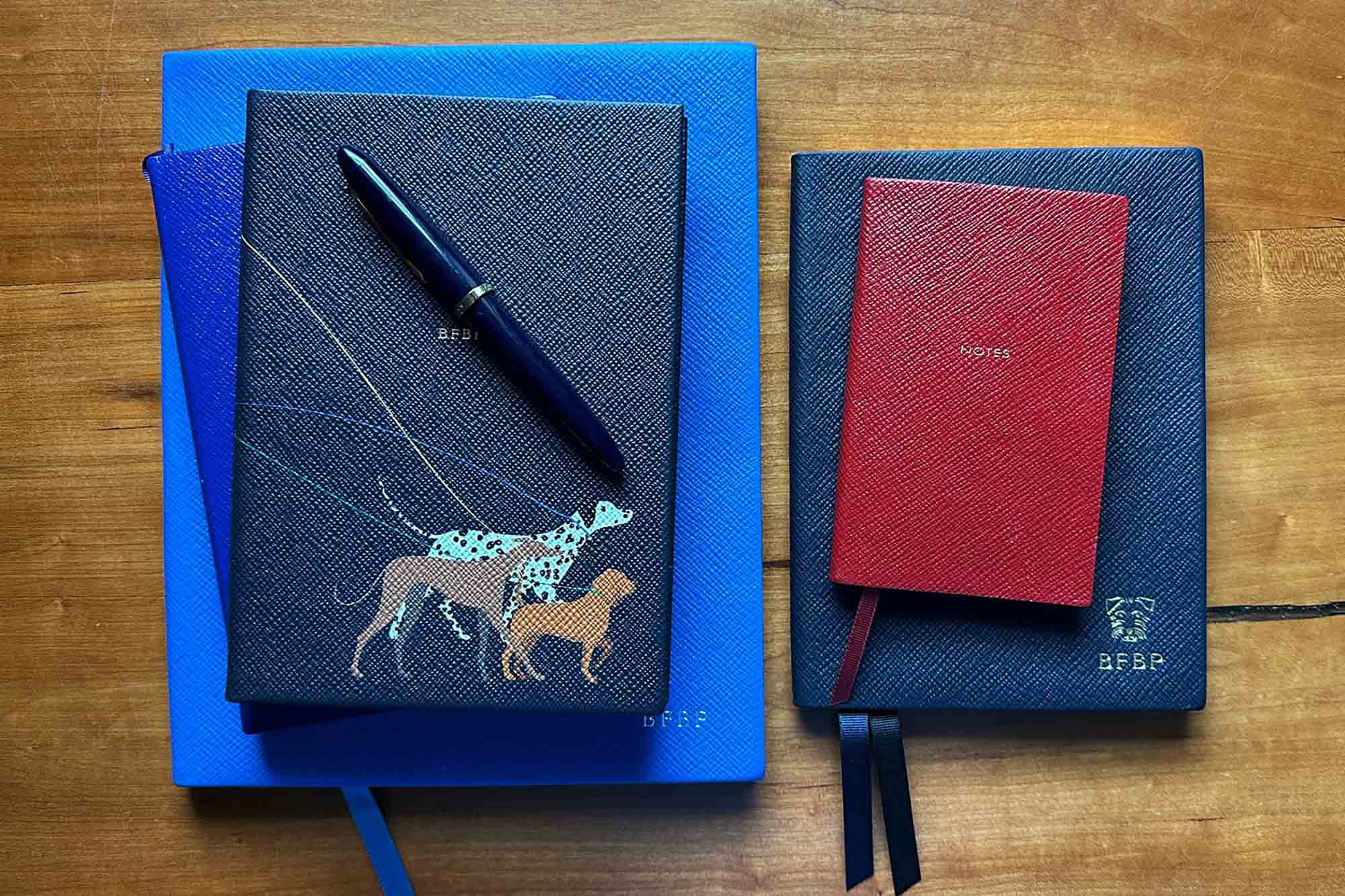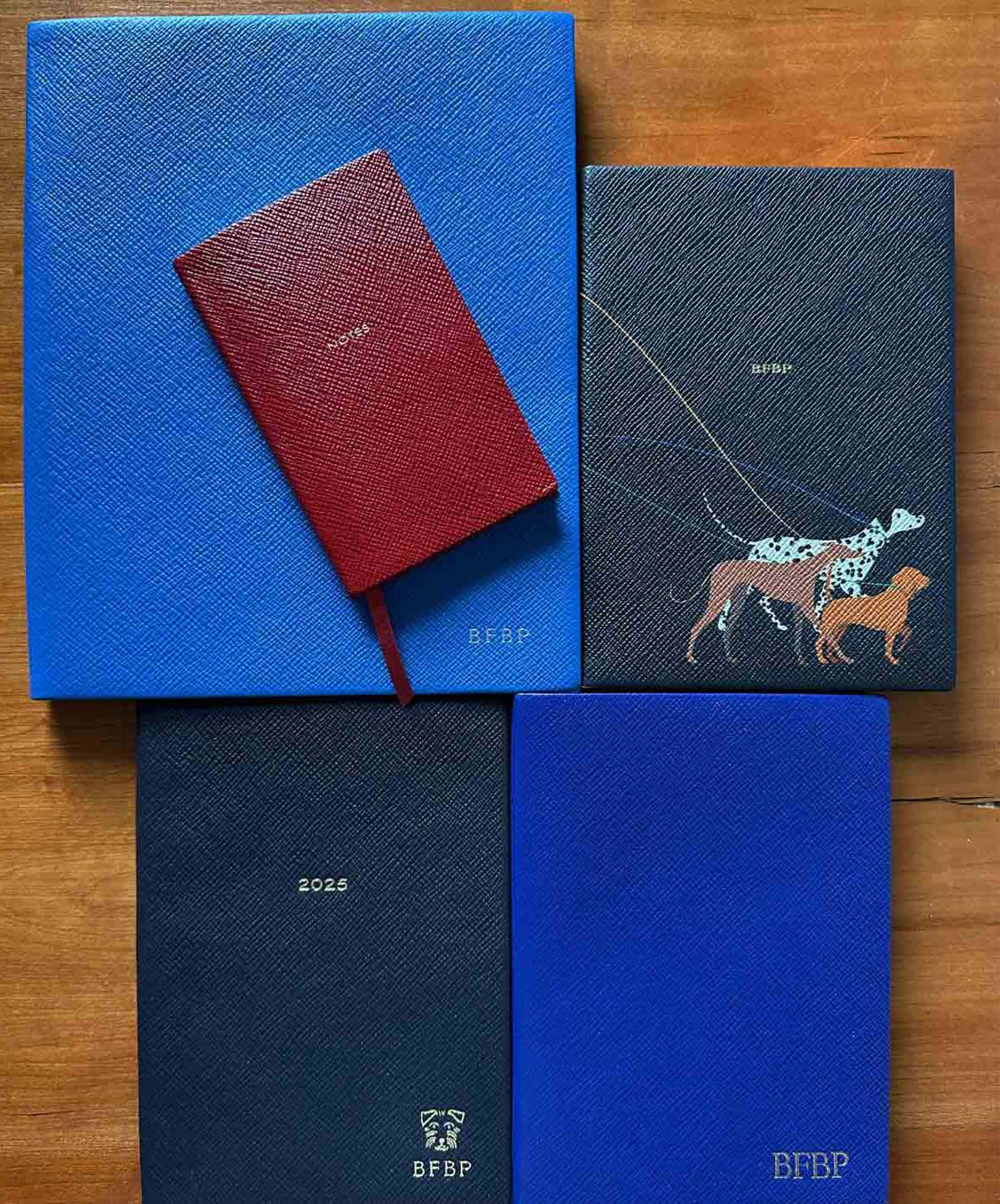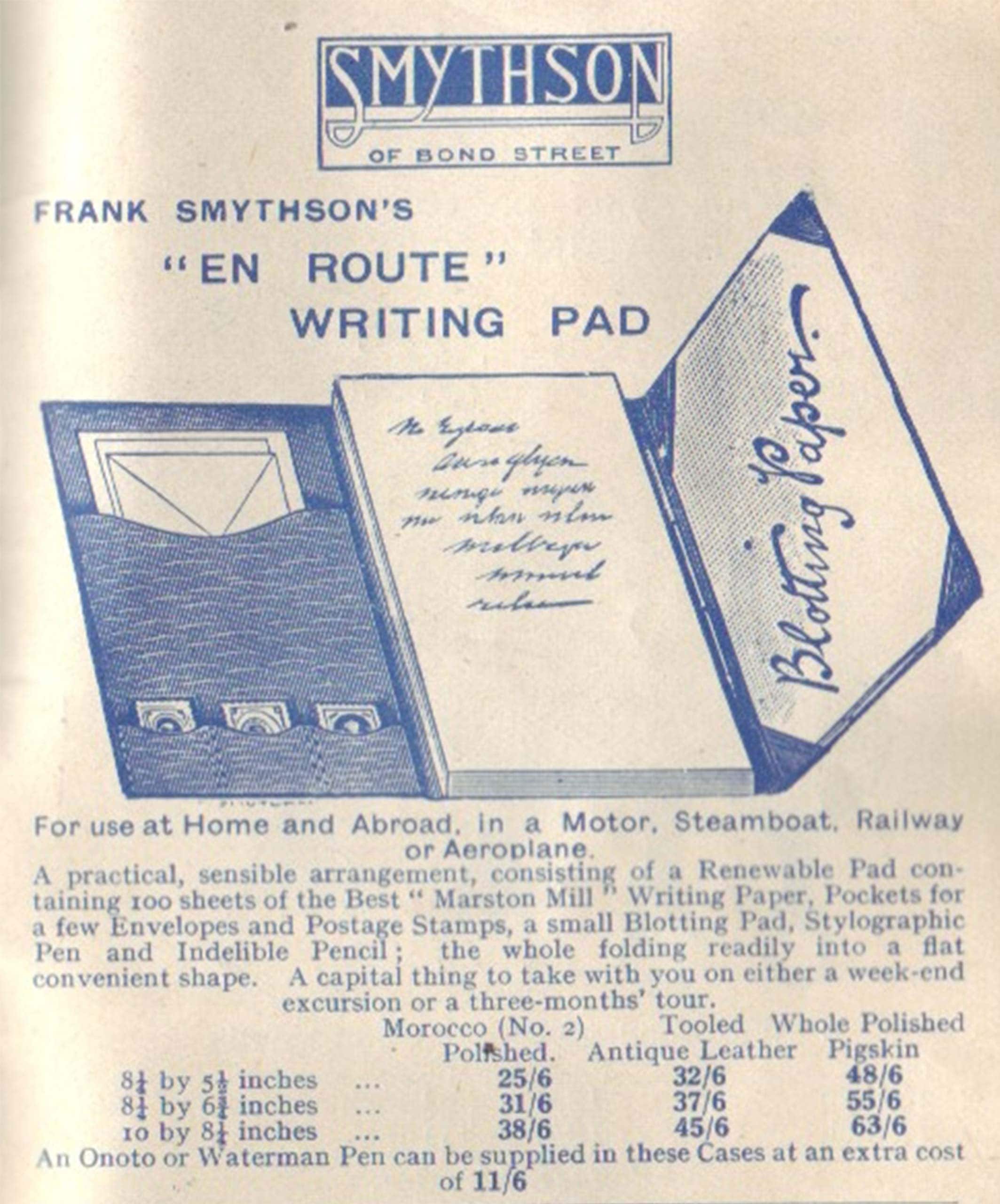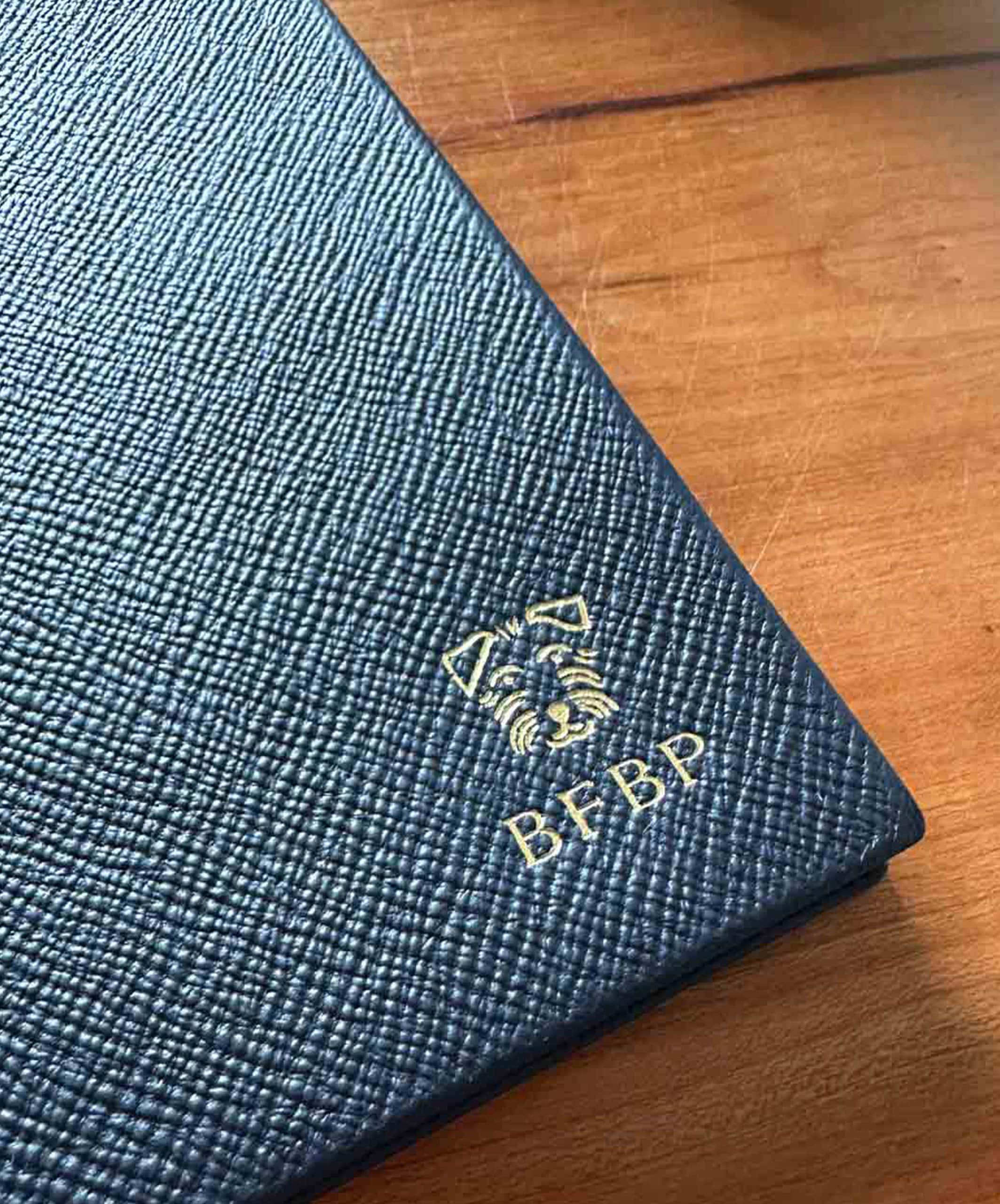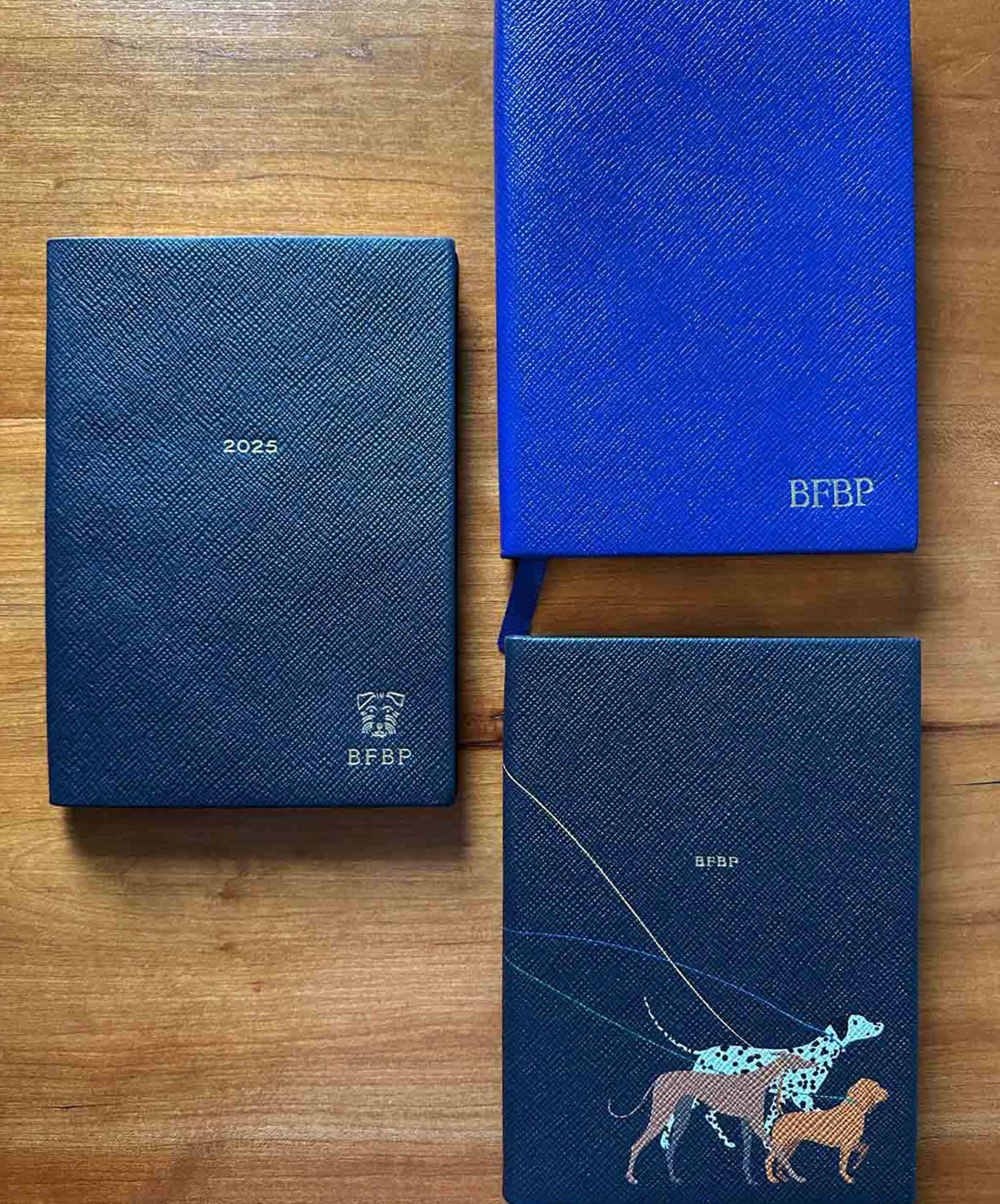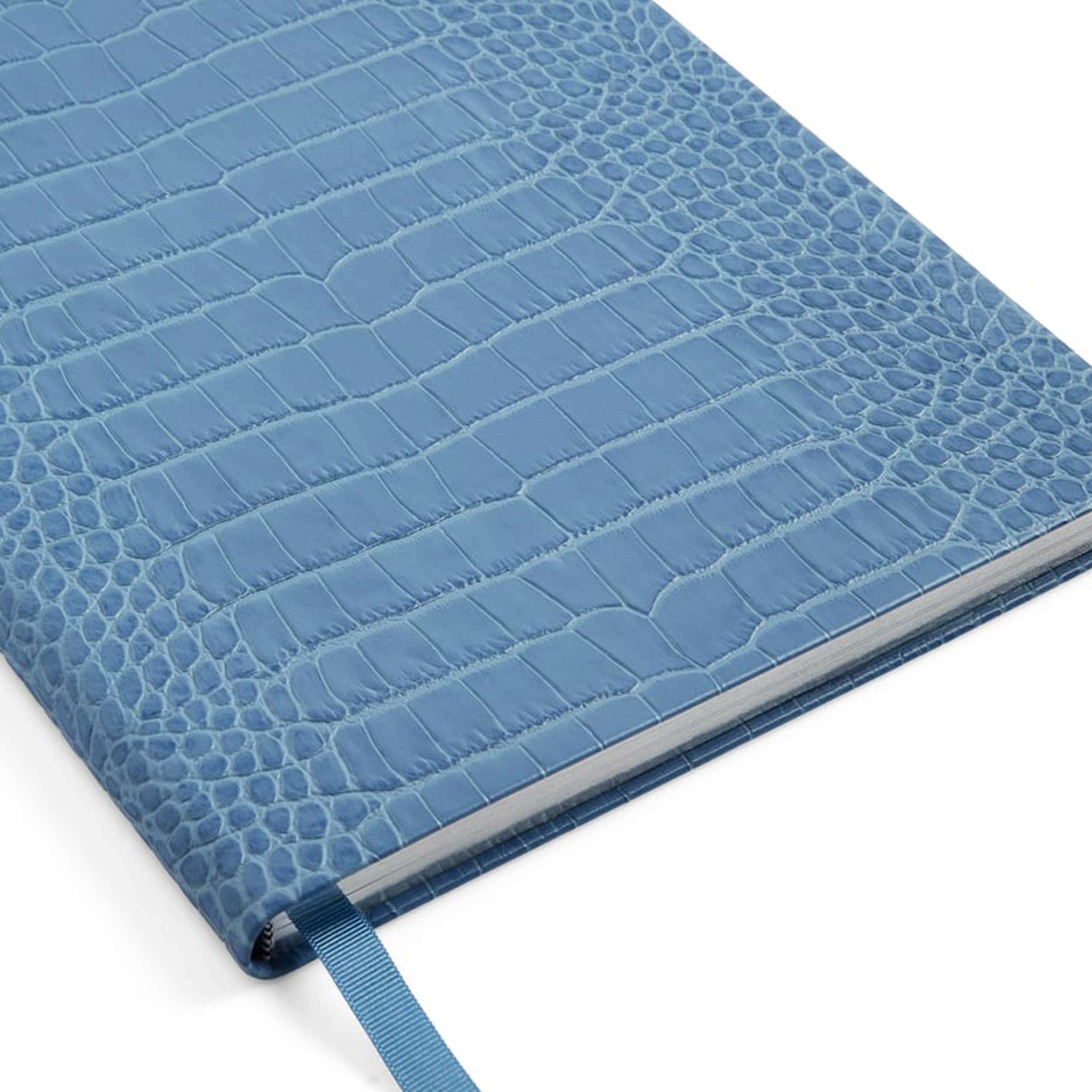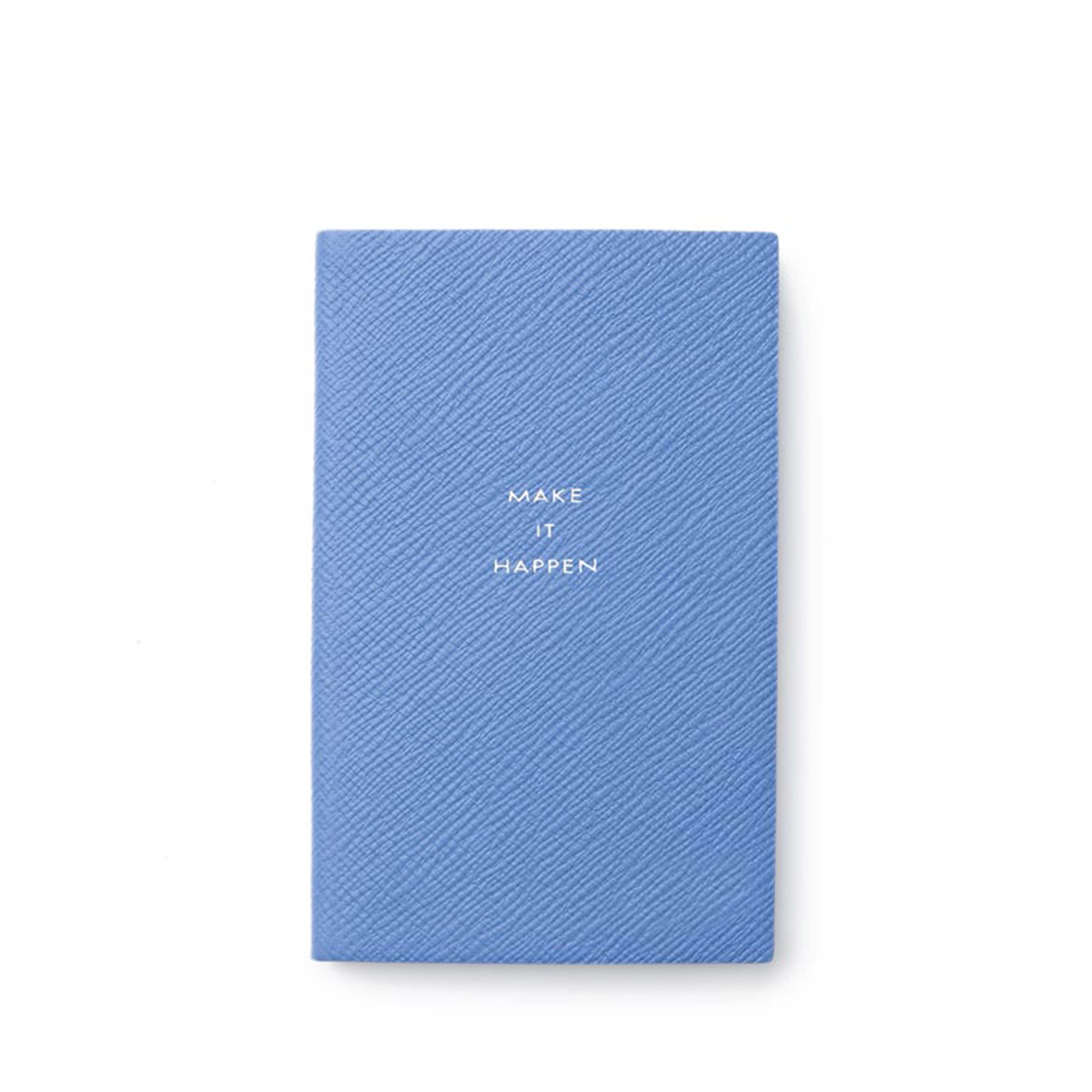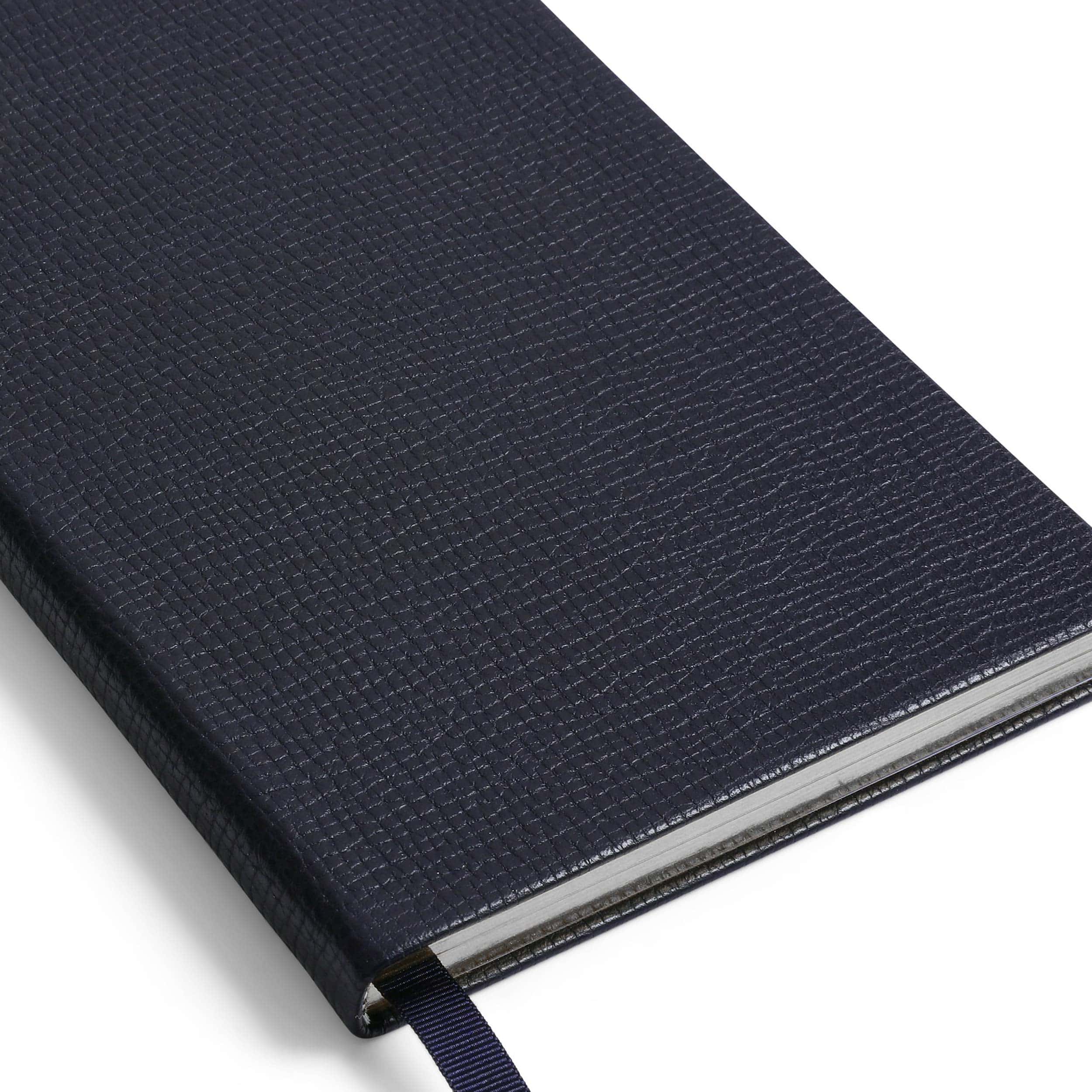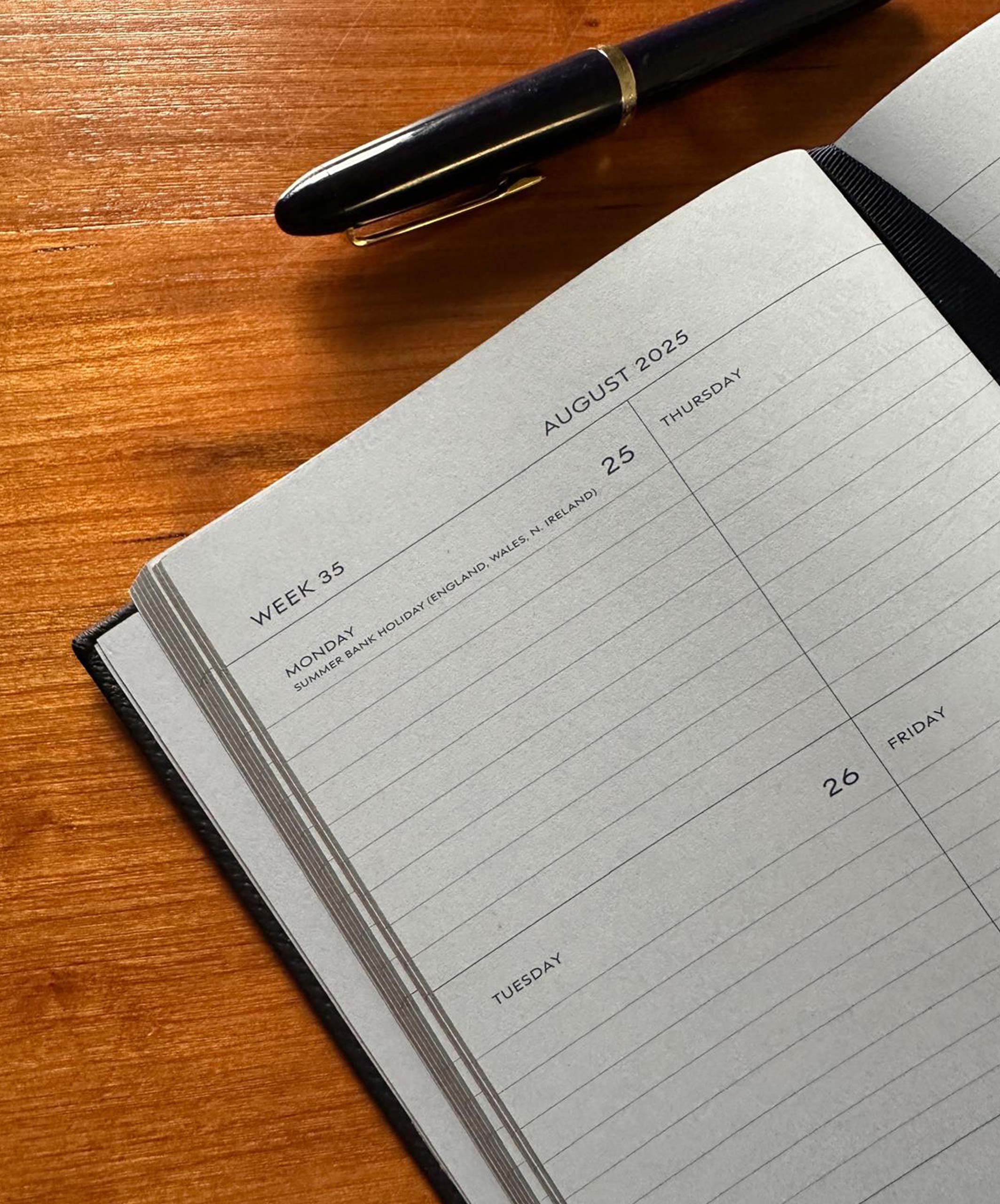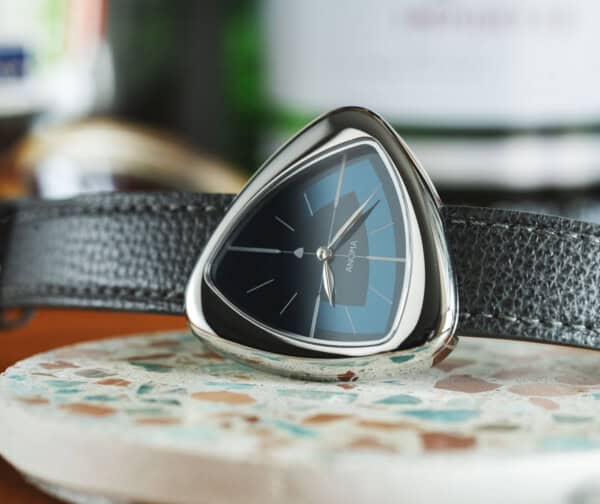With the new school year in full swing, I’ve been reminded by my nephews and nieces just how much fun buying school supplies can be. I’m sure there is a direct correlation between my love of buying random notebooks before the school year began and my current job in the luxury pen industry (even though the line is a bit jagged, by way of dropping out of law school, working as a timeshare salesman, and a food blogger for a few years).
But the collateral damage of my occupation has meant that I have a bit more of a discerning – read: judgmental – eye about stationery. Sure, I’m not going to tell my seven-year-old nephew that his composition notebook is the worst type of paper for fountain pens and is prone to tearing and bleeding…but I am thinking it. You see, it’s hard to appreciate these annual, almost Proustian moments this time of year now that I’ve been exposed to higher quality journals over the past few years.
If there is anyone to blame, it would be Smythson for this chip I have on my shoulder. The British company, who has been making luxury stationery since 1887, is by all accounts a brand that puts craftsmanship, heritage, and aesthetics into every product – and once you’ve had the best, it’s hard to go back.
History of Smythson
With London heritage evident in nearly every aspect of Smythson – from their branding to products to cheeky little sayings on notebooks – it’s evident how steeped the brand has been in British culture since its founding nearly 137 years ago. Founded by Frank John Smythson, the company was quick to cater to the upper class clientele of the Victorian era, with offerings of notebooks, diaries, as well as leather goods. With its central location within British society, Smythson soon became the go-to store for paper goods in London – a claim to fame that hasn’t stopped yet.
The real success of Smythson came in 1908, when their Featherweight paper was created (more on the contemporary paper below). The turn of the century was a time of exploration for the upper class. Steam engine trains made travel easier, as did the relative wealth shared among the upper class due to the business interests of wealthy families who benefited from the British Empire. This was the time of the Grand Tour across Italy and when people still wrote in diaries to mark their long trips abroad. But, this was also a time before iPhones, wheeled luggage, and Ubers. Everything you packed was carried, making any extra weight a cumbersome obstacle. And paper, especially at the time, was thick, heavy, and not as uniform as today’s. Because of this, Smythson’s Featherweight paper became a favorite among those who needed a simple, well-made notebook that didn’t take up a lot of room – or weight – on one’s travels.
Throughout the years, the company’s offerings haven’t strayed much from the original brand identity built by Frank John Smythson. The focus remains on building better versions of everyday products by using premium materials. With minimal branding, Smythson has allowed for the quality of their products to speak for themselves without announcing its presence to others. It’s this understatedness which has continued to attract everyone from Madonna to Queen Victoria as customers and why the brand has received four Royal Warrants over the years.
Smythson Notebooks: Worth the Cost
I’m sure I’m beginning to get a reputation around here as a bit of a snob and, while that might be true, I hope you’ll let me argue my case for buying a Smythson notebook nonetheless. While the retort will always be that you can get a perfectly fine notebook for $20, I can’t help but think that settling for “perfectly fine” isn’t good enough for me. To put it another way, a Whopper may fill me up for dinner, but I’ll surely be craving a perfectly cooked steak while I’m eating it.
A Smythson notebook is expensive, there is no doubt about it, but it’s expensive for a reason. You’re buying a leather journal that’s handmade from a heritage brand in London. Every clause and prepositional phrase in that last sentence racks up a few dollars. And while I can’t deny that there is a level of prestige that comes with using a Smythson that strokes my ego quite nicely, the performance of these notebooks is just as important to me.
For me, the quality of their Featherweight paper sold me the first time I wrote in one. While most papers aren’t made for fountain pens – nor, really, should they be, given how anachronistic the hobby is – the Featherweight paper held up quite nicely to the inky, smudgy chicken scratch I like to call note taking. For reference, your average notebook will instantly cause bleeding and spotting on the page below it; while even a thicker paper may cause feathering – when the ink begins to seep away from the line you drew – because of the texture and softness of the paper. Given the fact that the paper is so thin (I’d put it in a similar category to airmail paper, if you’ve ever played around with it), it’s an incredibly satisfying writing experience to not have to worry if I’m ruining the back of a page by pressing too hard on my pen.
As I’ve mentioned before with brands like Farer and Christopher Ward, I have to note once again how the Brits just do colors – or should I say colours – right. A signature feature of the Featherweight paper is that it comes in a soft blue with a silver edge. This small bit of color contrasts ink beautifully while adding just the smallest touch of dimension to the paper. This is, of course, a far cry from the creams and whites of traditional notebooks and puts Smythson in its own league when it comes to creating a notebook that feels expensive to write in.
Finally, it’s worth noting that Smythson is a company that has integrated leather into nearly every product offering from the brand since its founding. So it’s no surprise that all of their notebooks, agendas, and journals come with a selection of high-quality leathers in an array of colors and decorative options, like alligator print and monogramming. The decision to use a soft leather as a cover, versus something harder, makes for a more adaptable writing experience, as you’re not stuck laying out some large, hardbound journal on your desk to take up so much room.
Where to Begin?
Looking at the Smythson website may be a bit overwhelming, so I thought it would be helpful to give a primer on a few of the more popular styles available. With over a century in business and a seasonal schedule, similar to a fashion brand, the inventory is continuously adjusting; but this should at least get you to a place to know where to begin before purchasing.
Leathers
You’ll notice once you get into Smythson that you learn a new vocabulary. Take, for instance, the leathers. The top three to know in current production are:
Ludlow – Semi-matte leather in a grain pattern
Panama – A lightweight leather with a crossgrain pattern
Mara – An embossed alligator print with a polished finish
Size
Smythson notebooks come in three main size categories: pocket, mid-size, and desk. Each has their individual merits, but – speaking from experience here – the mid-size options are probably the most versatile. Of course, pocket sizes are going to be the least expensive, so if you’re looking for a more budget-friendly entrypoint into the brand, this may be better suited for you.
For the pocket size, the Panama is the noteworthy option from this category. Clocking in at 3.5 x 5.5”, it’s small enough to tuck into your bag, but not too small that it’s useless. The Panama is available for both notebook and agenda options and can be personalized with monogramming. Today, many Panama notebooks have small phrases like “Cocktails” and “Travel and Experiences”, giving you a jumping-off point for just what to put in your notebook.
For mid-size, I’m quite faithful to the Soho option (5.5 x 7.5”). I’m used to an A5 notebook size, and this is about as comparable as you’ll get. The Soho dimensions give it a more square feel than its Chelsea (4.4 x 6.6”) cousin, making for a bit more real estate on the page to work with. The Soho has a variety of colorways, leather options, and patterns, making it a versatile notebook that isn’t as drab as, say, a Moleskine.
For the desk size, the Portobello would be my choice. This is a big boy – coming in at 8.5 x 12”, making it a notebook I have relegated to all the notes I’ve compiled for my next novel and one I keep solely in my writing studio so I don’t lug it around often. Like the Soho, there is no absence of leather and color options for the Portobello.
Paper Designs
For notebooks, you can choose lined, blank, or sketching paper. For agendas, you have the option of a page-per-day layout or a week-in-view format with the left hand side dedicated to the days while the right hand side of the notebook is a lined page for additional notes.
Final Thoughts
If given the option, I’d choose a Smythson over many competitors if I am looking to elevate my writing experience. For me, buying an item like this isn’t just about the utility of the product, but about the experience I have when sitting down, opening my notebook, and letting my pen hover over the page for a second. In that small moment, before ink even hits the page, I feel that there is endless potential. I could write the next great American novel or balance my checkbook for the first time in years. I could write a love note or finish my Italian homework and try to remember where the accent goes in più (or is it píu?). But in any case, I have always been of the belief that the millisecond my pen is poised above a blank page is one of those pregnant moments just brimming with possibilities. I’d hate to ruin that moment with awful paper – wouldn’t you?









 Featured Videos
Featured Videos




